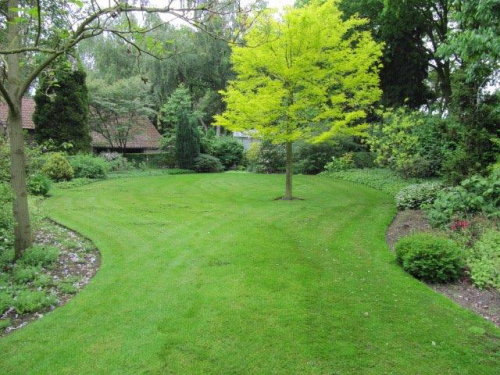 FOR thousands of years magnificent gardens were created without a lawn and it wasn’t until the 17th and 18th centuries, in the grand estates in England, that they become fashionable.
FOR thousands of years magnificent gardens were created without a lawn and it wasn’t until the 17th and 18th centuries, in the grand estates in England, that they become fashionable.
It was easy with regular rainfall and teams of gardeners to look after these huge gardens, but as the general public began to own homes and gardens, a lawn was considered essential.

In Australia, the standard quarter-acre block had the obligatory backyard lawn, which provided a safe playground with room to kick a football or play cricket.
But with our hot summers and high water costs, do we need to persist with the traditional lawn?
“Are we really looking at the true cost of maintaining a lawn?” asks Dr Kenneth Brown, of Nimmitabel.
He says it’s not only the capital cost of the new mower, the additional initial cost of irrigation and other tools to maintain the lawn, but also the ongoing costs of lawn fertilisers, weedkillers, lawn seed for patching, regular coring etcetera.
All this comes at an environmental cost, too. Look at the damage to the Great Barrier Reef from the runoff of chemical fertilisers and sprays from banana plantations.
 THE main ingredients of lawn fertilisers are nitrogen, phosphorus and potassium. Runoff from these into the stormwater system ends up in lakes around Canberra.
THE main ingredients of lawn fertilisers are nitrogen, phosphorus and potassium. Runoff from these into the stormwater system ends up in lakes around Canberra.
Phosphates lead to a reduction of oxygen and possible toxic blue-green algae blooms that force the closure of lakes for recreational purposes – a common occurrence in Canberra.
When chemical fertilisers are used regularly to promote a lush, green lawn, especially in periods of frequent and heavy rain, there is always the chance of run-off before the chemicals are properly dissolved. We’ve had that sort of rain this winter.
Chemical runoff can also have a dramatic effect on native plants, almost all of which will not tolerate phosphorus.
While the use of these products may not be detrimental for an individual backyard lawn, when there are whole streets of front lawns where the chemicals can enter directly into storm water drains, it gets environmentally serious.
Chemical fertilisers will kill worms quicker, being applied more often than on garden beds to keep that lawn green.
So, what’s the true cost of maintaining a lawn? By the end of summer you will be horrified by the size of just your water bill alone!
Jottings…
- Use boiling water to kill weeds in paths.
- With regular rain there is no need to water bulbs.
- Plant parsley in groups to fill bare spots in the garden.
- Plant or sow peas, lettuce, beetroot and English spinach, asparagus and artichokes.
- Looking at rainfall figures since 1870 the lowest annual rainfall was 260mm in 1982. The highest annual rainfall was 1043.4 in 1887.
- The annual All Saints Floral Display and Art Show will be held at the church, on Cowper Street, Ainslie over the long weekend of September 24-26. (Saturday, 10am-4pm; Sunday, noon-4pm and Monday, 10-2pm).
Who can be trusted?
In a world of spin and confusion, there’s never been a more important time to support independent journalism in Canberra.
If you trust our work online and want to enforce the power of independent voices, I invite you to make a small contribution.
Every dollar of support is invested back into our journalism to help keep citynews.com.au strong and free.
Thank you,
Ian Meikle, editor




Leave a Reply